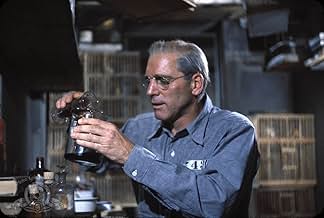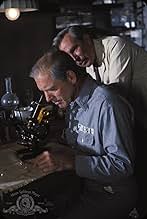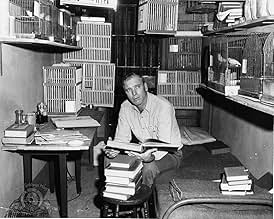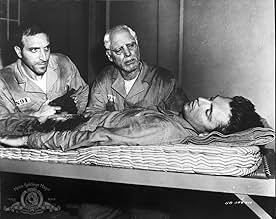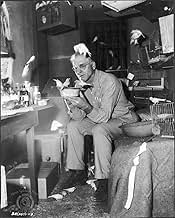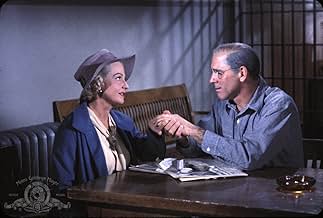NOTE IMDb
7,8/10
20 k
MA NOTE
Un meurtrier condamné et retenu en isolement permanent se rachète en devenant un ornithologue renommé.Un meurtrier condamné et retenu en isolement permanent se rachète en devenant un ornithologue renommé.Un meurtrier condamné et retenu en isolement permanent se rachète en devenant un ornithologue renommé.
- Nommé pour 4 Oscars
- 4 victoires et 12 nominations au total
Robert Bailey
- Reporter on Dock
- (non crédité)
Nicky Blair
- Inmate
- (non crédité)
John Burnside
- Captain of Marines
- (non crédité)
Robert Burton
- Sen. Ham Lewis
- (non crédité)
Mushy Callahan
- Inmate
- (non crédité)
James J. Casino
- Inmate
- (non crédité)
James Cavanaugh
- Guard
- (non crédité)
Histoire
Le saviez-vous
- AnecdotesBurt Lancaster was so immersed in his role that he wept on some occasions, but he asked director John Frankenheimer not to show him cry to the audience.
- GaffesWhile Stroud is at Alcatraz, his cell is depicted with a window. All the cells at Alcatraz were located on inside walls with no openings to the outside.
- Citations
[last lines]
Robert Stroud: Tom? You know what they used to call Alcatraz in the old days?
Tom Gaddis: What?
Robert Stroud: Bird Island.
Tom Gaddis: [narrating] Robert Stroud's petition for parole has been denied annually for 24 years. Age 72, he is now in his 53rd year of imprisonment.
- Versions alternativesEuropean release is five minutes longer than original US theatrical version.
- ConnexionsFeatured in Film Review: Burt Lancaster (1968)
Commentaire à la une
I've just seen this film on TV, it being several years since I saw it last. What a fine job Burt Lancaster makes of portraying Robert Stroud, a two-times murderer who finds inner peace when he nurses a young sparrow back to health in his prison cell. More birds follow, and in time he becomes an authority on bird pathology and develops several cures for diseases which were thought untreatable.
The quiet dignity that Lancaster gives to the part may or may not have been a genuine part of the real Robert Stroud but it is deeply moving, and the Director's careful treatment of the relationship he has with his long-term warder who grows old alongside him is one part of the film which can bring a lump to the throat.
Of course the film carries the message that not all prisoners should be treated with brutal disdain and could be seen as just another left-wing handwringer from a period when this kind of thing was popular among movie-makers, but it is certainly a top-notch example.
The quiet dignity that Lancaster gives to the part may or may not have been a genuine part of the real Robert Stroud but it is deeply moving, and the Director's careful treatment of the relationship he has with his long-term warder who grows old alongside him is one part of the film which can bring a lump to the throat.
Of course the film carries the message that not all prisoners should be treated with brutal disdain and could be seen as just another left-wing handwringer from a period when this kind of thing was popular among movie-makers, but it is certainly a top-notch example.
Meilleurs choix
Connectez-vous pour évaluer et suivre la liste de favoris afin de recevoir des recommandations personnalisées
- How long is Birdman of Alcatraz?Alimenté par Alexa
Détails
- Date de sortie
- Pays d’origine
- Langue
- Aussi connu sous le nom de
- Birdman of Alcatraz
- Lieux de tournage
- Alcatraz Island, San Francisco Bay, Californie, États-Unis(exteriors: long shots)
- Société de production
- Voir plus de crédits d'entreprise sur IMDbPro
Box-office
- Budget
- 2 650 000 $US (estimé)
- Durée2 heures 27 minutes
- Couleur
- Rapport de forme
- 1.85 : 1
Contribuer à cette page
Suggérer une modification ou ajouter du contenu manquant

Lacune principale
By what name was Le prisonnier d'Alcatraz (1962) officially released in India in English?
Répondre

